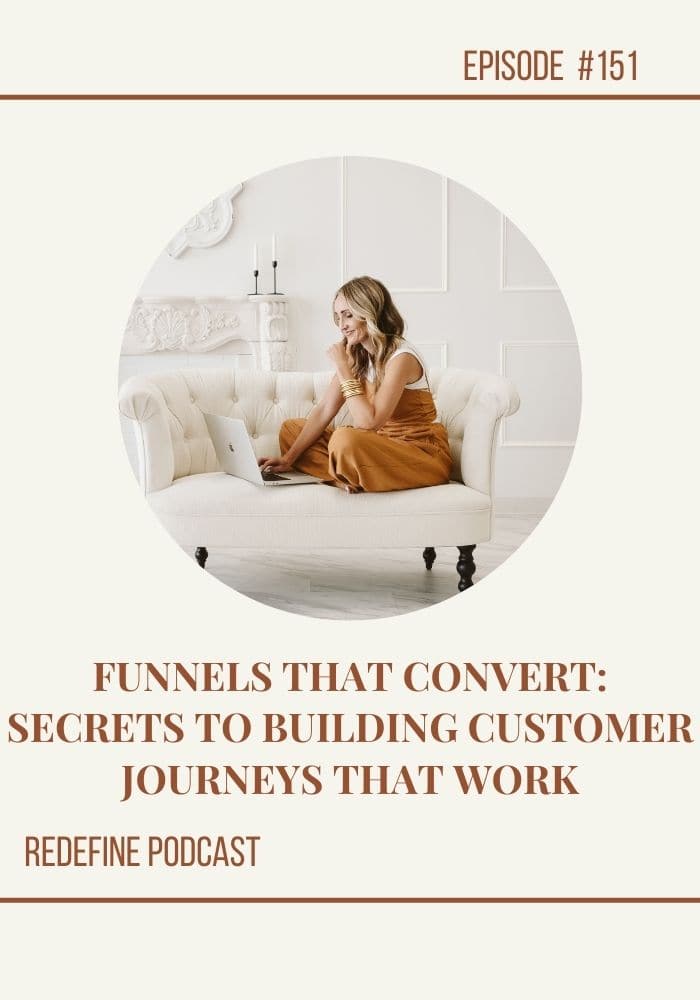
Funnels That Convert: Secrets to Building Customer Journeys That Work
In the world of digital marketing, a well-optimized marketing funnel can be the difference between stagnant revenue and massive growth. A funnel is a step-by-step process designed to guide potential customers toward making a purchase. When built effectively, it becomes a powerful tool for increasing conversion funnel efficiency and nurturing long-term customer relationships. Whether you’re in e-commerce, coaching, or any other industry, these actionable tips will help you create funnels that convert.
1. Understand Your Audience’s Journey
Before creating your funnel, it’s crucial to map out your customer journey. Think about the stages your ideal customer goes through—from awareness to purchase.
Action Steps:
Create Buyer Personas: Identify who your potential buyers are. What are their pain points, goals, and hesitations?
Outline the Stages: Map the funnel stages into four key categories: Awareness, Interest, Decision, and Action (AIDA model).
Use Analytics: Leverage tools like Google Analytics to understand how your audience interacts with your marketing efforts.
Example:
For a B2B sales consultant, a prospective customer’s journey might look like this:
Awareness: Discovering a blog post about effective sales strategies.
Interest: Downloading a free guide on optimizing sales performance.
Decision: Attending a free webinar on sales funnel management.
Action: Purchasing a high-ticket consulting package.
2. Offer Value at Every Stage
Each funnel stage should provide value that aligns with your customer needs. This builds trust and increases sales cycle efficiency.
Action Steps:
Top of Funnel (Awareness): Offer free resources like blog posts, case studies, or downloadable guides.
Middle of Funnel (Interest): Provide deeper value through webinars, email sequences, and content marketing.
Bottom of Funnel (Decision): Highlight testimonials, social proof, and offer a risk-free purchase.
Example:
A B2C sales funnel for an online fitness program might include:
A blog article about weight loss myths (Awareness).
A free downloadable meal plan (Interest).
A limited-time discount on a membership (Decision).
3. Leverage Lead Magnets and Tripwires
Lead magnets and tripwires are essential tools to capture attention and encourage action. A lead magnet is a free resource you offer in exchange for contact information, while a tripwire is a low-cost offer designed to convert leads into paying customers.
Action Steps:
Create Irresistible Lead Magnets: Ensure your lead magnet solves a specific problem. Examples include eBooks, templates, or free trials.
Design Low-Cost Tripwires: Offer a small, valuable product priced between $7 and $50 to help customers make their first purchase.
Example:
A marketing automation coach might:
Offer an email marketing checklist.
Follow up with a discounted annual subscription plan.
4. Optimize Your Landing Pages
Your sales funnel template should include high-converting landing pages that are clear, compelling, and optimized for successful sales funnel results.
Action Steps:
Write Clear Headlines: Make your value proposition obvious within the first few seconds.
Use Strong CTAs: Guide users to the next step with call-to-action buttons like “Get Started” or “Claim Your Free Guide.”
Include Social Proof: Add testimonials, reviews, or case studies.
Example:
A sales pipeline software company might create a landing page with:
A headline: “Optimize Your Sales Pipeline Today!”
A CTA: “Get My Free Demo Now.”
Testimonials from past clients.
5. Nurture Leads with Email Sequences
Email marketing is the backbone of many successful sales strategies. It’s a cost-effective way to nurture leads and move them toward conversion.
Action Steps:
Segment Your Audience: Group leads based on behavior or interests.
Create Automated Sequences: Develop sequences for nurturing, onboarding, and upselling.
Personalize Your Emails: Use first names, reference their actions, and address their specific pain points.
Example:
A sales team might:
Send a welcome email immediately after a lead downloads a free guide.
Follow up with case studies, tips, and an invitation to a paid sales training.
6. Incorporate Upsells and Downsells
Once a customer makes a purchase, it’s easier to encourage them to buy more. Upsells and downsells increase customer retention and boost sales performance.
Action Steps:
Offer Relevant Upsells: Suggest premium versions or complementary products.
Provide Downsells: If a lead hesitates, offer a lower-cost alternative.
Example:
An existing customer who buys a self-paced online course might be offered:
A VIP coaching package as an upsell.
A mini-course at a lower price as a downsell.
7. Test and Optimize Continuously
Even the best-designed sales funnel strategy requires regular testing and optimization.
Action Steps:
A/B Test Elements: Experiment with headlines, CTAs, and landing page designs.
Track Metrics: Use tools like Google Analytics to monitor conversion rates.
Analyze Drop-Off Points: Identify where users leave the sales process and make improvements.
8. Use Retargeting Ads
Many prospective customers won’t convert on their first interaction. Retargeting ads are a great way to re-engage them.
Action Steps:
Set Up Retargeting Campaigns: Use Facebook Ads or Google Ads to reach users who visited your site but didn’t take action.
Personalize Ads: Create ads tailored to the user’s behavior.
Example:
A social media marketing agency might retarget users who visited their service page with an ad offering a free consultation.
9. Add Urgency and Scarcity
Creating a sense of urgency or scarcity can motivate potential customers to take action sooner.
Action Steps:
Limited-Time Offers: Use countdown timers on landing pages.
Exclusive Deals: Highlight limited availability (e.g., “Only 5 spots left!”).
Seasonal Campaigns: Tie offers to specific events or holidays.
Example:
A brand awareness campaign might promote a flash sale with: “24 Hours Only: 50% Off!”
10. Analyze Results and Retest
A successful marketing strategy is never finished. Regularly reviewing your marketing team’s results is key to long-term success.
Action Steps:
Review KPIs: Focus on metrics like conversion rates and customer acquisition costs.
Gather Feedback: Ask existing customers about their experience.
Stay Current: Keep up with industry trends and adapt your strategies.
DONT FORGET!
Join me Wednesday, February 26th, at 10 AM MST for a FREE training where I’ll show you how to grow and market your email list using the power of AI!
Whether you’re just starting or looking to scale, this training is packed with strategies to help you attract, engage, and convert your audience effortlessly.
Join the Conversation
Head on over to my Instagram or Facebook group, Redefine Your Business, and share your thoughts about today’s show. See you again, same time, same place next week!
Resources:
The Meeting Place Membership
Rock The Reels
1:1 Coaching
Free Client Welcome Guide
Additional Trainings and Resources
Connect with Brittni:
Follow me on the Gram – @brittni.schroeder
Join my Facebook Group
Visit my website
Subscribe to my Youtube








